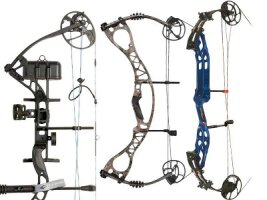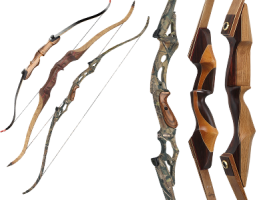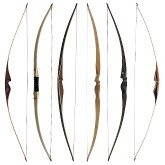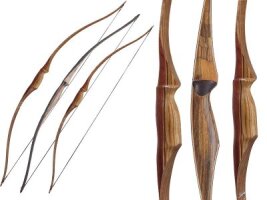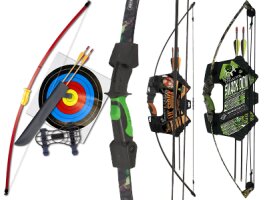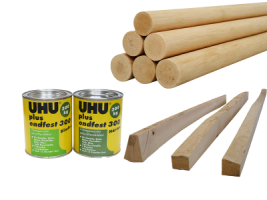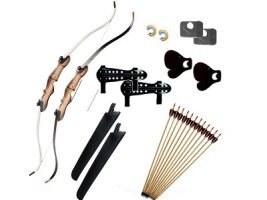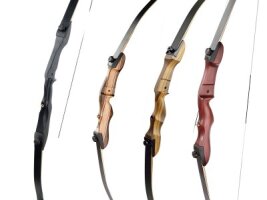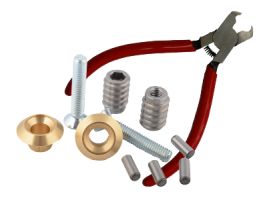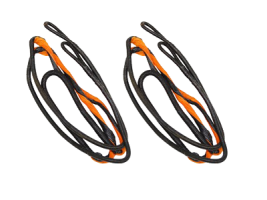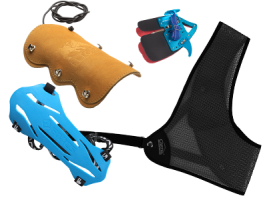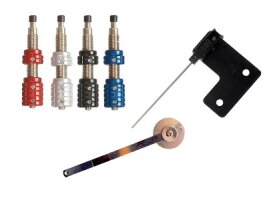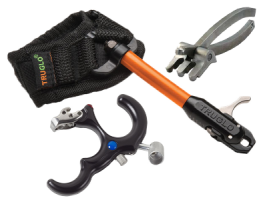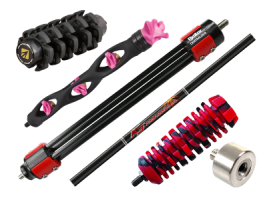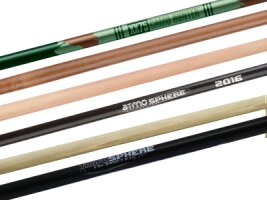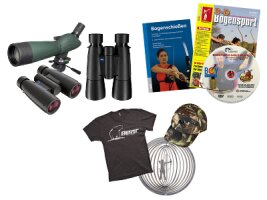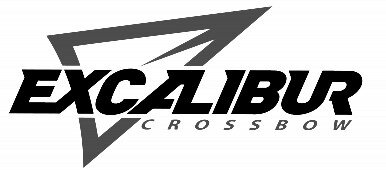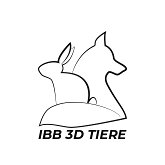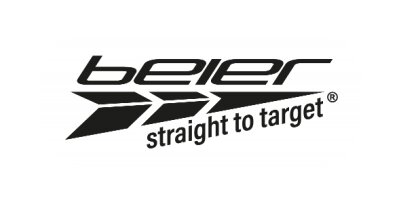Following an ancient tradition: bow hunting
Bow hunting is one of the oldest forms of hunting in the world - finds dating back up to 22,000 years before our era indicate that people were already hunting with bows and arrows back then. And many traditionally orientated cultures still use this method of obtaining food today. Around the world, bowhunting is being revived in many countries and is attracting the interest of modern rifle hunters.
Legal aspects in brief
- Bowhunting is prohibited in Germany, Austria and Switzerland.
- In other countries, hunters need a bowhunting licence to hunt with bow and arrow.
- In countries where bowhunting is permitted, hunting laws regulate the exact procedure - so always check thoroughly beforehand!
Getting a bowhunting licence
Even if bow hunting is not permitted in the countries of the DACH region, there are numerous hunting schools that teach how to use a bow and arrow for stalking. This is important because: safety and hunting justice naturally also play the most important role in bowhunting. The licence proves that the hunter is able to hit consistently with a bow and arrow and knows how to handle the equipment to prevent accidents.
First point of contact for those interested:
- Germany - German Bowhunting Federation
- Austria - Austrian Bowhunting Federation
- Switzerland - Swiss Bowhunting Federation
The equipment for bowhunting
The hunting bow
For bowhunting, hunters need special hunting bows or crossbows that are suitable for bowhunting - sports bows are not designed for this! State-of-the-art materials and sophisticated technology ensure that the equipment is light, robust and accurate. Two variants have particularly stood out:
- Compound bows are very popular due to their pulley principle. They store some of the energy in the so-called cams (pulleys over which the string runs), making it easier to draw length. The arrow flies faster and further with less effort. However, their maintenance is more complex. If the string breaks along the way, it cannot simply be replaced.
- Recurve bows come closest to the romantic ideal of traditional bows. The limbs are bent forwards at the ends in the direction of the shot so that the string rests there - hence the name. They are easy to handle and maintain, but require more strength. As a take-down version, they can also be taken apart and transported to save space.
Hunting arrows and tips
Bowhunting has very specific requirements: The arrows must fit the hunter and his bow and fly with sufficient speed to hit the target - at around 240 to 350 feet per second. Broadheads often have two or more razor-sharp cutting edges. They are available in different versions, which are selected according to the game to be hunted.
Is bowhunting fair game?
Bowhunting not only arouses interest, it is also scrutinised critically. After all, the bowhunter has to get much closer to the game in order to hit it safely - the risk of misses that injure the game instead of killing it quickly and painlessly is understandably a major point of criticism. The maximum shooting distance is 25 metres. Experienced hunters know how close that is.
On the other hand, a Danish study has found that the rate of wounding misses among bowhunters is just under 5%. This corresponds to the average for modern rifle hunting.
Advocates also argue that the broadheads kill the game faster and more painlessly than rifle bullets. In addition, the arrow is so quiet that the game is not startled. The background danger is also greatly reduced due to the significantly shorter flight distance and no lead residue remains in the wild or in the meat.
Bowhunting trips around the world
Bowhunting is still or once again successfully practised in many countries around the world! The USA is probably the country for bowhunting par excellence. But Africa, Canada and South America - and neighbours such as France, Belgium and Italy - also offer productive bowhunting areas.
What do you need to know about bowhunting?
Hunting with a bow and arrow is a traditional and demanding hunting method that requires both skill and in-depth knowledge. Here are some important aspects to consider if you decide to hunt with a bow and arrow:
- Type of arrowheads: Bowhunters who go big game hunting must only use arrows with sharp broadheads. These must contain at least two blades, whereby the blades should have a diameter of at least 25 mm or a length of at least 40 mm.
- Prohibited arrowheads: Arrows with disc, poison or explosive tips are strictly prohibited for all game species.
- Labelling of hunting arrows: It is important that all hunting arrows are clearly labelled so that their origin and intended use are clear.
- Training to become a bowhunter: In Germany, anyone can take part in a basic bowhunting course, regardless of previous knowledge or whether they have their own bow. It is possible to obtain a German hunting licence after successfully completing the course and passing the examination. Training is carried out in accordance with strict guidelines laid down by organisations such as the DBJV, EBF and IBEP.
- Importance of the bowhunting licence: The bowhunting licence is an indispensable document for anyone who wants to hunt with a bow and arrow. It confirms the successful completion of the bow course and is comparable to a car driving licence. After all, not only physical but also mental fitness is required when hunting with a bow and arrow.
- Content of the course: Hunting ethics, safety, correct clothing and camouflage, hunting law and the basic equipment for bowhunting are taught in detail. Special emphasis is placed on marksmanship.
- Prerequisites and duration of training: Training to become a bowhunter is intensive and practice-orientated. There are usually three instructors per course. The minimum age for the bowhunter examination is 14 years, the duration of the course can vary.
- Costs: The costs for the course vary depending on previous knowledge and membership of the DBJV. The cost is up to 950 euros for beginners with no previous knowledge.
- Bowhunting in Germany and Austria: Although bowhunting is prohibited in these countries, you can also hunt in other countries with a bowhunting licence.
- Characteristics of a bowhunter: A successful bowhunter is characterised by interest, passion, concentration and dedication. It is crucial to master different distances and targets perfectly when shooting with a bow and arrow.
Which hunting arrows for which bow?
For both beginners and experienced archers, choosing the right hunting arrow is a complex decision. There are a variety of models and materials from which arrows can be made, including wood, aluminium and carbon.
Wooden arrows are the most traditional choice. They are particularly suitable for longbows and recurve bows. A characteristic of wooden arrows is that they are perceived as quieter due to their higher weight compared to aluminium or carbon arrows. The weight of a wooden arrow can vary depending on the type of wood. Arrows made from cedar wood are particularly popular, but arrows made from pine and spruce are also valued by bowhunters.
Aluminium arrows are made from a special aluminium alloy. They are heavier than wooden arrows, but have an impressive shock effect. They are also more resistant than their wooden counterparts. Despite their weight, they are inexpensive and are suitable for traditional bows as well as recurve and compound bows. Their versatility makes them a popular choice for many bowhunters.
Carbon arrows are in high demand in modern bowhunting and are currently the most popular arrows on the market. They are characterised by their stability, robustness and durability. Another advantage of carbon arrows is that they can be customised. The weight can be customised with different tips, inserts and additional weights, making them an ideal choice for different hunting situations.
The choice of bow depends on various factors, including the type of bow, the hunting situation and the shooter's preferences. It is therefore worth trying out different types of arrows to find the one that best suits your needs.
Other important accessories for hunting with a bow
When bowhunting, it is essential that the arrow shaft is accompanied by certain arrow accessories to ensure optimum performance. These include the tip, the nock, the shaft and the vanes. Each of these components plays a crucial role in ensuring that the arrow maintains its straight trajectory and hits the target accurately.
The broadhead is the most important element of a hunting arrow. It usually consists of two or three blades and can also be designed as a mechanical broadhead with folding blades. It should only be used for hunting to ensure a clean cut. Please do not use broadheads for shooting at the Target, as this exposes them to extreme loads and considerably shortens their service life.
The nock, which is usually made of plastic, allows the arrow to be attached (nocked) to the string. It is attached to the end of the arrow and can also help to balance the weight of the hunting arrow. Its robustness is of great importance as it has to withstand both high energies and bad weather.
The shaft, often referred to as the centrepiece of the arrow, largely determines the flight characteristics of the arrow. Its length is usually determined by the archer's draw length. It can be made of various materials such as carbon, aluminium or wood and must be particularly stable and resistant and matched to the draw weight of the hunting bow.
Finally, the vanes or natural fenders of the arrow serve as rudders, so to speak. They play a decisive role in regulating the trajectory of the hunting arrow. Typically, there are three such feathers, which are glued directly onto the shaft of the arrow at equal distances to ensure optimum flight stability.
A summary
Bowhunting is a time-honoured and complex art that requires both skill and in-depth knowledge. When choosing the right arrow for hunting, both the type of arrowheads and the material of the arrow are crucial. While wooden arrows are considered the traditional choice, aluminium and carbon arrows offer modern alternatives, each with their own advantages. Training to become a bowhunter in Germany is strictly regulated and covers both theoretical and practical aspects of hunting. A bowhunting licence, comparable to a car driving licence, is essential for anyone wishing to practise this hunting method. Despite the ban on bowhunting in Germany and Austria, the bowhunting licence allows you to hunt in other countries. It is also important to have the right accessories for the arrow in order to achieve optimum results. A successful bowhunter is characterised by passion, concentration and the ability to precisely master different distances and targets.

